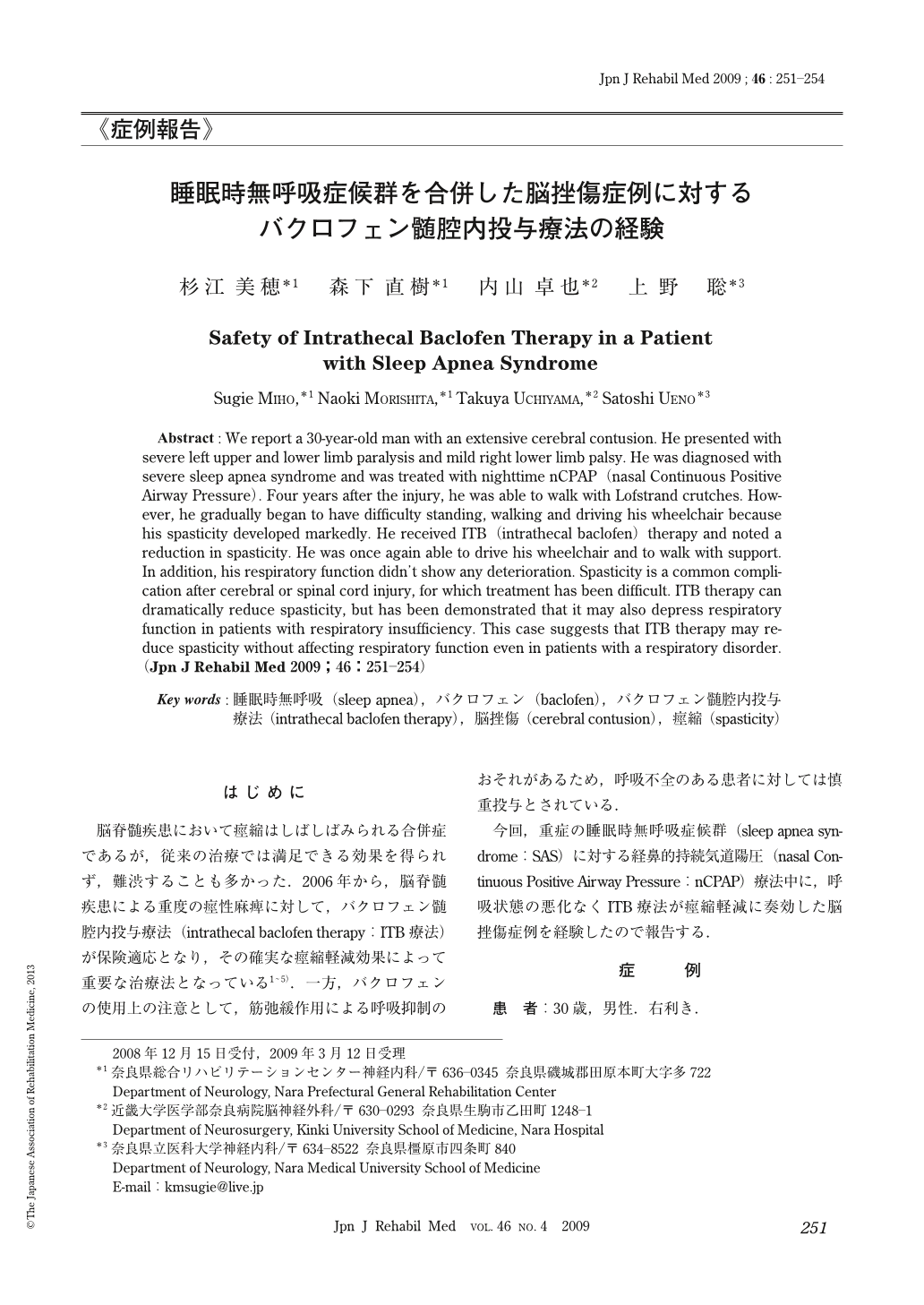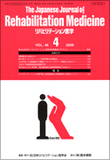Japanese
English
- 販売していません
- Abstract 文献概要
- 1ページ目 Look Inside
- 参考文献 Reference
はじめに
脳脊髄疾患において痙縮はしばしばみられる合併症であるが,従来の治療では満足できる効果を得られず,難渋することも多かった.2006年から,脳脊髄疾患による重度の痙性麻痺に対して,バクロフェン髄腔内投与療法(intrathecal baclofen therapy:ITB療法)が保険適応となり,その確実な痙縮軽減効果によって重要な治療法となっている1~5).一方,バクロフェンの使用上の注意として,筋弛緩作用による呼吸抑制のおそれがあるため,呼吸不全のある患者に対しては慎重投与とされている.
今回,重症の睡眠時無呼吸症候群(sleep apnea syndrome:SAS)に対する経鼻的持続気道陽圧(nasal Continuous Positive Airway Pressure:nCPAP)療法中に,呼吸状態の悪化なくITB療法が痙縮軽減に奏効した脳挫傷症例を経験したので報告する.
Abstract : We report a 30-year-old man with an extensive cerebral contusion. He presented with severe left upper and lower limb paralysis and mild right lower limb palsy. He was diagnosed with severe sleep apnea syndrome and was treated with nighttime nCPAP (nasal Continuous Positive Airway Pressure). Four years after the injury, he was able to walk with Lofstrand crutches. However, he gradually began to have difficulty standing, walking and driving his wheelchair because his spasticity developed markedly. He received ITB (intrathecal baclofen) therapy and noted a reduction in spasticity. He was once again able to drive his wheelchair and to walk with support. In addition, his respiratory function didn't show any deterioration. Spasticity is a common complication after cerebral or spinal cord injury, for which treatment has been difficult. ITB therapy can dramatically reduce spasticity, but has been demonstrated that it may also depress respiratory function in patients with respiratory insufficiency. This case suggests that ITB therapy may reduce spasticity without affecting respiratory function even in patients with a respiratory disorder.

Copyright © 2009, The Japanese Association of Rehabilitation Medicine. All rights reserved.


